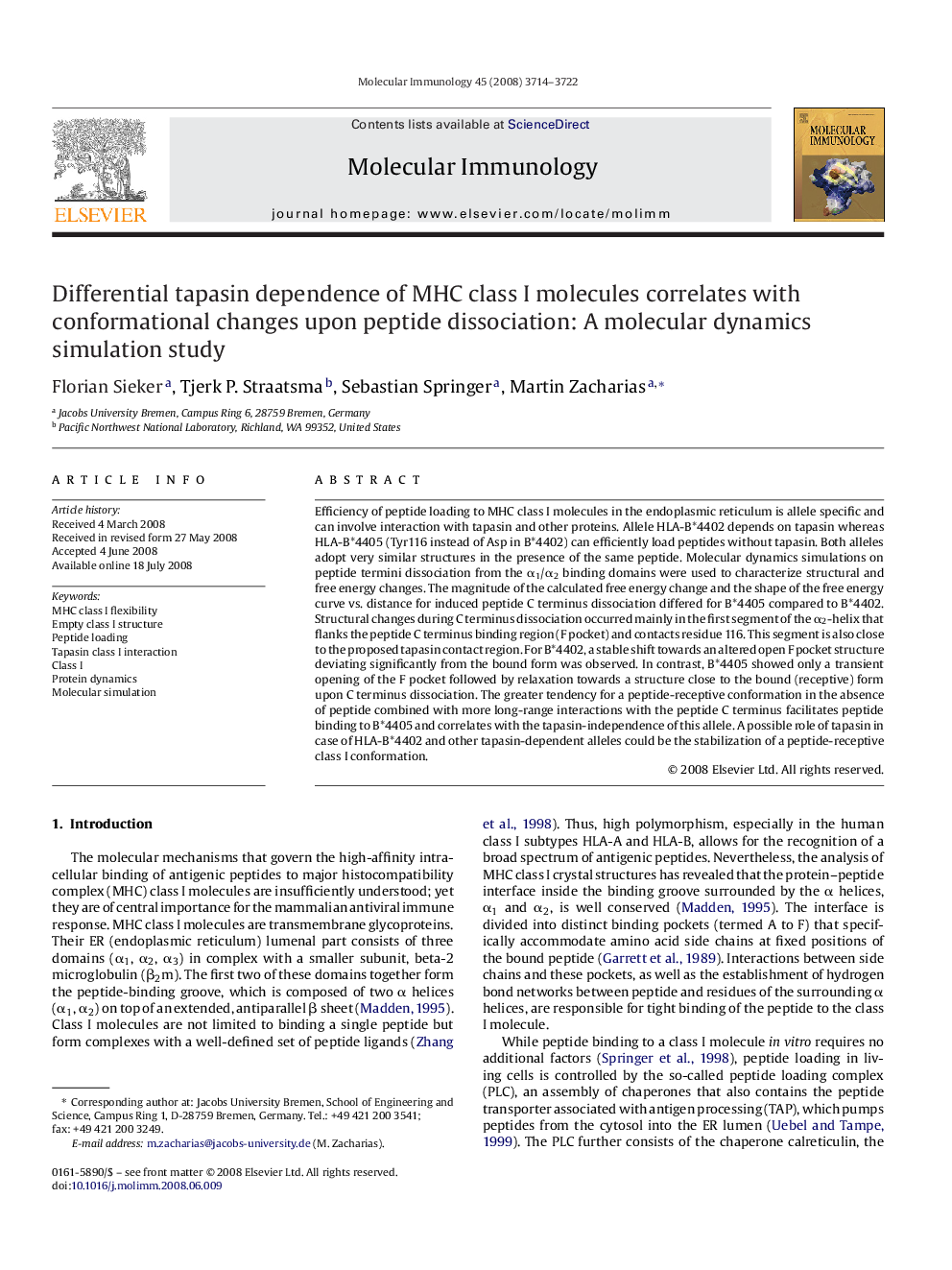| Article ID | Journal | Published Year | Pages | File Type |
|---|---|---|---|---|
| 2832128 | Molecular Immunology | 2008 | 9 Pages |
Efficiency of peptide loading to MHC class I molecules in the endoplasmic reticulum is allele specific and can involve interaction with tapasin and other proteins. Allele HLA-B*4402 depends on tapasin whereas HLA-B*4405 (Tyr116 instead of Asp in B*4402) can efficiently load peptides without tapasin. Both alleles adopt very similar structures in the presence of the same peptide. Molecular dynamics simulations on peptide termini dissociation from the α1/α2 binding domains were used to characterize structural and free energy changes. The magnitude of the calculated free energy change and the shape of the free energy curve vs. distance for induced peptide C terminus dissociation differed for B*4405 compared to B*4402. Structural changes during C terminus dissociation occurred mainly in the first segment of the α2-helix that flanks the peptide C terminus binding region (F pocket) and contacts residue 116. This segment is also close to the proposed tapasin contact region. For B*4402, a stable shift towards an altered open F pocket structure deviating significantly from the bound form was observed. In contrast, B*4405 showed only a transient opening of the F pocket followed by relaxation towards a structure close to the bound (receptive) form upon C terminus dissociation. The greater tendency for a peptide-receptive conformation in the absence of peptide combined with more long-range interactions with the peptide C terminus facilitates peptide binding to B*4405 and correlates with the tapasin-independence of this allele. A possible role of tapasin in case of HLA-B*4402 and other tapasin-dependent alleles could be the stabilization of a peptide-receptive class I conformation.
